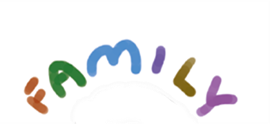Whole Family and the Family Framework

Whole Family Casework Model
How is ‘whole family’ work different?
- includes all members of the household and other important people in the family’s life
- aims to provide support to everyone in the family that needs help
- brings agencies together to provide joint support, with one plan to meet the needs of everyone in the family
- practitioners are able to invest time with families to find out what they want to be different and understand why they're not reaching their goals
- works towards goals that have been identified and agreed by all of those involved
- keeps the voice of the children in the family at the centre of all of our work
- makes sure that families can sustain positive changes after professionals are no longer involved
The FAMILY model used by Family Early Help Practitioners in ‘whole family’ work
The FAMILY model was originally developed in social work settings based on the research evidence from the National Institute for Health and Care Excellence and the Social Care Institute for Excellence which recommended the use of multi-modal interventions to impact on children at risk of entering care as a result of relationship breakdown or neglect (Department for Education, 2017). Multi-modal interventions use a single, collaborative analysis (agreed with key stakeholders) of the core determinants of difficulties for that particular family to design and deliver interventions ranging from the practical to the therapeutic. Analyses of family problems pay attention to the multiple causes of difficulties, including those on a societal and practical level as well as those related to family functioning and individual mental health or disability. All interventions are required to be evidence-based, drawing particularly on social learning and systemic theories of family functioning. The whole approach is collaborative and aims to not just change the existing presenting problems, but also to coach families to understand and manage future problems themselves more successfully.
This is achieved when the practitioner works with a family following the stages set out by the FAMILY acronym:
More information
If you need more information on the approach, visit:
- https://www.taylorconway.org.uk/stairs
- https://www.gov.uk/government/publications/scaling-and-deepening-the-reclaiming-social-work-model
Page last updated: 12 January 2023
